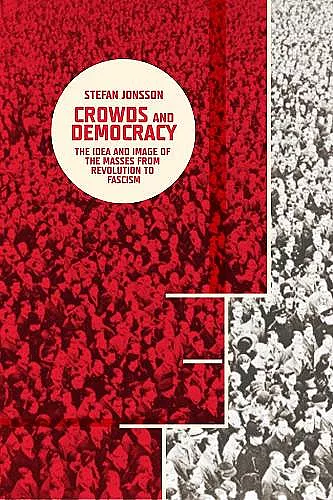Crowds and Democracy
The Idea and Image of the Masses from Revolution to Fascism
Format:Hardback
Publisher:Columbia University Press
Published:18th Oct '13
Currently unavailable, and unfortunately no date known when it will be back

In his demonstrable command of the cross-disciplinary fund of available literatures and their respective knowledges, Jonsson's treatments effectively dissolve any meaningful boundary between literary criticism, philosophical explication, and intellectual and cultural history. -- Geoff Eley, University of Michigan In his strikingly choreographed and beautifully written study, Jonsson traverses an extensive archive, delving into novels and artworks, philosophy, historiography, and psychoanalysis. From this remarkable interdisciplinary bricolage emerges a profound set of insights into the shifting notions of the masses during the interwar years. -- Kerstin Barndt, University of Michigan
Spanning aesthetics, cultural studies, intellectual history, and political theory, this volume unpacks the significance of the shadow agent known as “the mass” during a critical period in European history.Between 1918 and 1933, the masses became a decisive preoccupation of European culture, fueling modernist movements in art, literature, architecture, theater, and cinema, as well as the rise of communism and fascism and experiments in radical democracy. Spanning aesthetics, cultural studies, intellectual history, and political theory, this volume unpacks the significance of the shadow agent known as "the mass" during a critical period in European history. It follows its evolution into the preferred conceptual tool for social scientists, the ideal slogan for politicians, and the chosen image for artists and writers trying to capture a society in flux and a people in upheaval. This volume is the second installment in Stefan Jonsson's epic study of the crowd and the mass in modern Europe, building on his work in A Brief History of the Masses, which focused on monumental artworks produced in 1789, 1889, and 1989.
In his demonstrable command of the cross-disciplinary fund of available literatures and their respective knowledges, Jonsson's treatments effectively dissolve any meaningful boundary among literary criticism, philosophical explication, and intellectual and cultural history. -- Geoff Eley, University of Michigan In his strikingly choreographed and beautifully written study, Jonsson traverses an extensive archive, delving into novels and artworks, philosophy, historiography, and psychoanalysis. From this remarkable interdisciplinary bricolage emerges a profound set of insights into the shifting notions of the masses during the interwar years. -- Kerstin Barndt, University of Michigan A magnificent sociocultural analysis, written with the erudition of the intellectual historian and the vision of a photographer in the captivating prose of the experienced journalist. -- Goran Therborn, University of Cambridge Stefan Jonsson's book analyzes in depth, but also with wit and elegance, the centrality of the 'masses' as a problematic category in the troubled trajectories of Germany and Austria in the interwar period. Reading discourses and images that range from sociology to theater and photography, with Simmel and Freud as core theorists of the new regime of the collective passions and expressionism and modernism as extreme forms of its aesthetic representation, Jonsson convincingly argues that what was at stake and made democracy unstable was not only the violence of political movements but also the aporia of the modern individuality. This offers fascinating insights into our own contemporary cultural crisis. -- Etienne Balibar, author of We, the People of Europe? Reflections on Transnational Citizenship
ISBN: 9780231164788
Dimensions: unknown
Weight: unknown
336 pages